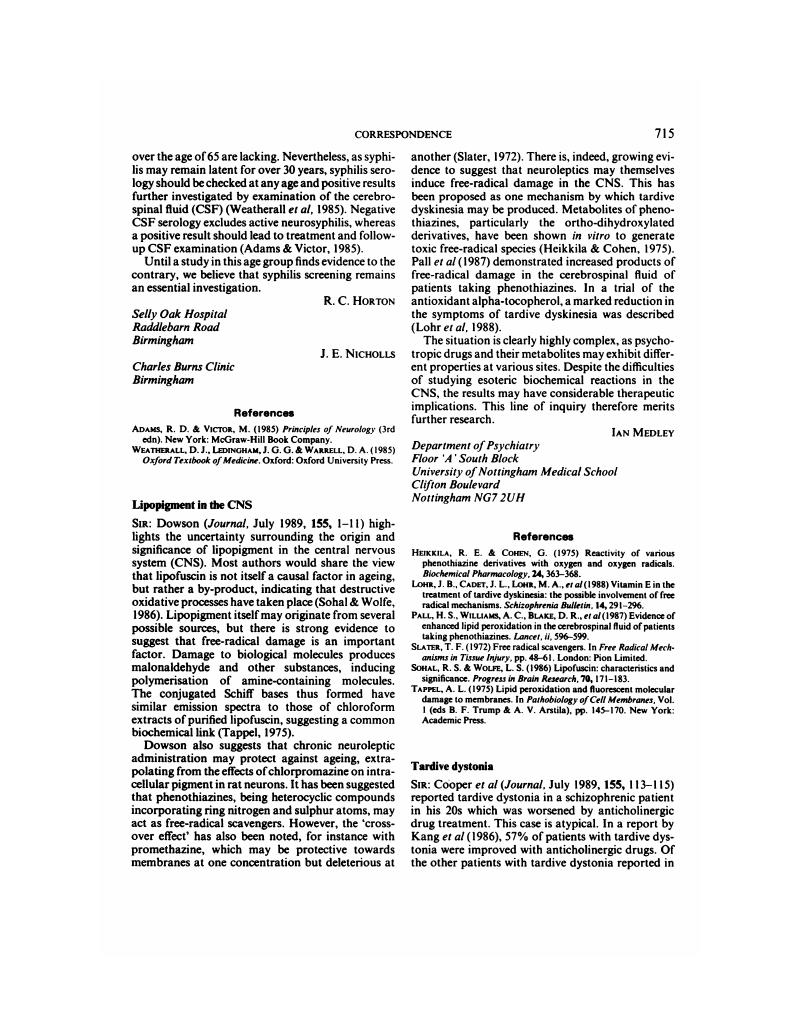No CrossRef data available.
Article contents
Lipopigment in the CNS
Published online by Cambridge University Press: 02 January 2018
Abstract
An abstract is not available for this content so a preview has been provided. As you have access to this content, a full PDF is available via the ‘Save PDF’ action button.

- Type
- Correspondence
- Information
- Copyright
- Copyright © Royal College of Psychiatrists, 1989
References
Heikkila, R. E. & Cohen, G. (1975) Reactivity of various phenothiazine derivatives with oxygen and oxygen radicals. Biochemical Pharmacology, 24, 363–368.Google Scholar
Lohr, J. B., Cadet, J. L., Lohr, M. A., et at (1988) Vitamin E in the treatment of tardive dyskinesia: the possible involvement of free radical mechanisms. Schizophrenia Bulletin, 14, 291–2%.Google Scholar
Pall, H. S., Williams, A. C., Blake, D. R., et al (1987) Evidence of enhanced lipid peroxidation in the cerebrospinal fluid of patients taking phenothiazines. Lancet, ii, 596–599.CrossRefGoogle ScholarPubMed
Slater, T. F. (1972) Free radical scavengers. In Free Radical Mechanisms in Tissue Injury, pp. 48–61. London: Pion Limited.Google Scholar
Sohal, R. S. & Wolfe, L. S. (1986) Lipofuscin: characteristics and significance. Progress in Brain Research, 70, 171–183.CrossRefGoogle ScholarPubMed
Tappel, A. L. (1975) Lipid peroxidation and fluorescent molecular damage to membranes. In Pathobiology of Cell Membranes, Vol. 1 (eds B. F. Trump & A. V. Arstila), pp. 145–170. New York: Academic Press.Google Scholar





eLetters
No eLetters have been published for this article.